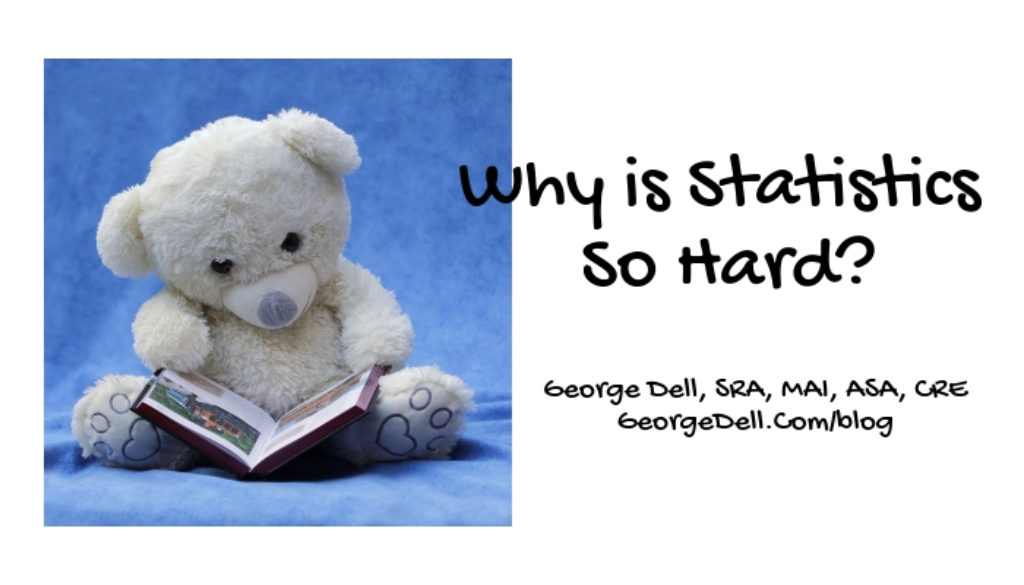It’s not. Not for the Average Appraiser Bear.
In elementary school and high school level, what is taught are “the two types of statistics.” One is descriptive statistics, the other is inferential statistics.
Descriptive statistics are used to describe, to summarize, or characterize a data set, so the human mind can understand rows of numbers.
Inferential statistics were designed for the same reason, but to solve a data problem. Before computers and databases, you simply could not get all the data. You had to collect just part of it, and infer from the part to the whole. From the sample to the population. There were two ways to do this – judgment or randomness:
- Use your skill and keen judgment to collect some data (your comps);
- Carefully randomize your selection from the population (your random sample).
These statistics and confidence intervals tell how well a random sample explains a population.
Appraisers do not take random samples to pick comps. No need for statistical inference.
If you have the data, you just use it.
Today. It’s. Simple. There is no need for inferential statistics. No need for confidence intervals, t-scores, Chi-squares, p-values, z-test, sample mean, sample standard deviation, or sample proportion. No need.
The Appraisal of Real Estate (Appraisal Institute, 14th. ed., p.737): “Predictive models are predominant in most valuation settings.” Appraisal is a problem in prediction, not how to represent a population from a sample.
For our purpose, inferential statistics is essentially obsolete. It’s hard and a waste of time. It’s a curriculum teaching what is no longer needed — and never was needed for appraisers.
What we do need is simple. The only tools we really need are descriptives, such as mean, median, standard deviation, and coefficient of variation (COV – the normalized deviation measure). We have been led down a blind box canyon. Meanwhile, our competitors (such as AVMs, economists, accountants, and unlicensed evaluators) continue to provide the world of clients with what they need – an evaluation of risk for loans, investments, and legal damages. They use computers, modeling skills and subject-matter knowledge. This is data science
Data science answers big data.
We need to get out of this box canyon, and quickly. We need to find the trail to the ridge above, so we can see our competitors. See our clients’ needs: Risk evaluation. Intrinsic value. Sustainable value. Not over/under-exuberant market price pretending to be real value.
Inferential statistics is hard. Statistical inference is the wrong tool, the wrong model, the wrong problem.

March 1, 2017 @ 8:08 am
Interesting, thank you for sharing. I look forward to future posts.
February 27, 2019 @ 6:55 am
Keep up the good work George! I look forward to SGDS II and doing more with R.